
Earthworms: benefits for garden soil
As I mentioned in a previous article, earthworms are great for the garden. And I’ve been incorporating them into my soil building strategy.
Here are some of the benefits that earthworms have for garden soils, according to PennState Extension:
- improve water infiltration: primarily through the vertical burrows of certain species. This helps water stay in the soil–instead of running off–making it more available to plants.
- aeration: by making burrows and by mixing organic & inorganic matter together as they munch through soil organic matter. Air in the soil means plant roots are less likely to rot.
- counteract soil compaction: through digging and depositing their excrement (which has a soil stabilizing structure). Plant roots generally grow better in looser soil.
- create topsoil: by breaking down organic matter and incorporating it into the soil.
- increase availability of nutrients to plants: worm excrement contains nutrients that are highly available to plants.
- neutralize soil pH: organic acids produced in their guts likely buffer changes in soil pH.
- increase beneficial microbes: these microbes–presumably from the earthworm gut microbiome–help with the decomposition of soil organic matter.
- control nematodes: apparently some earthworm species eat nematodes.
So with all of these benefits, I now often ask myself, “How can I keep the earthworms in my garden happy?” Here are some of the things I’m doing based on what I’ve learned about the science of earthworms.
Feed the worms
I figure that worms are more likely to stick around and flourish if they’re eating well.
One thing I consider is what I’m feeding the worms. Ideally, I want to take into account many of the different feeding preferences in order to maintain a variety of worms in my garden soils.
For example, depending on the type of worm, some prefer surface litter, while others prefer to dine on dead roots. For the surface litter eaters, I provide mulch in the form of dead or dying plant matter. Mulching is something I was doing even before my latest interest in worms.
As for the root eaters, I’m now in the practice of cutting plants off at the base when I’m clearing out weeds or old crops. This leaves the roots in the ground. Before, I would have pulled plants out by the roots, perhaps still leaving them on the surface as mulch. But now I like to leave roots in the ground as worm food.
I’ve also learned that while some worms can tolerate large pieces of leaf litter, others apparently really prefer smaller pieces. For these reasons, when I’m mulching, I try to provide at least some mulch that is finely chopped or powdered. This is often easier said than done, and I want to learn how to do this more effectively and efficiently.
And apparently, earthworms prefer food that is high in protein and carbs. I guess this really shouldn’t come as a surprise! Based on what I’ve read, legumes are a good choice because of their high nitrogen (i.e., protein) content. So when I’m using the lawnmower to create mulch, I’ll sometimes focus on patches of clover, filling the mower bag with these nitrogen-rich legumes. Then I’ll spread these clippings over the bed.
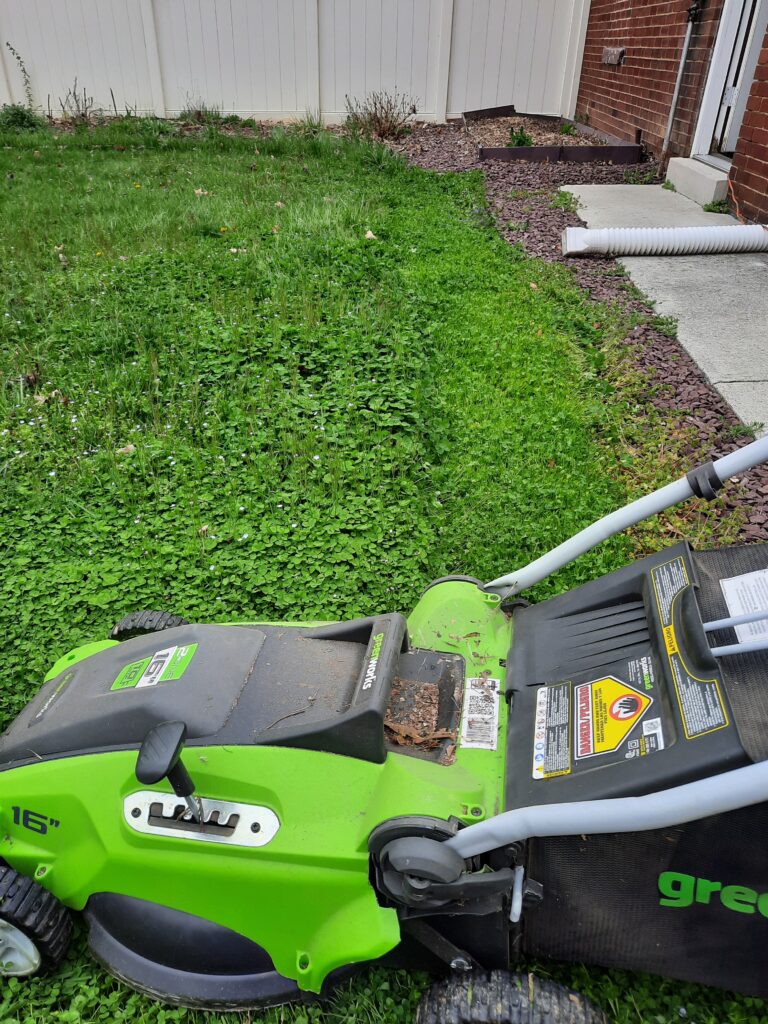
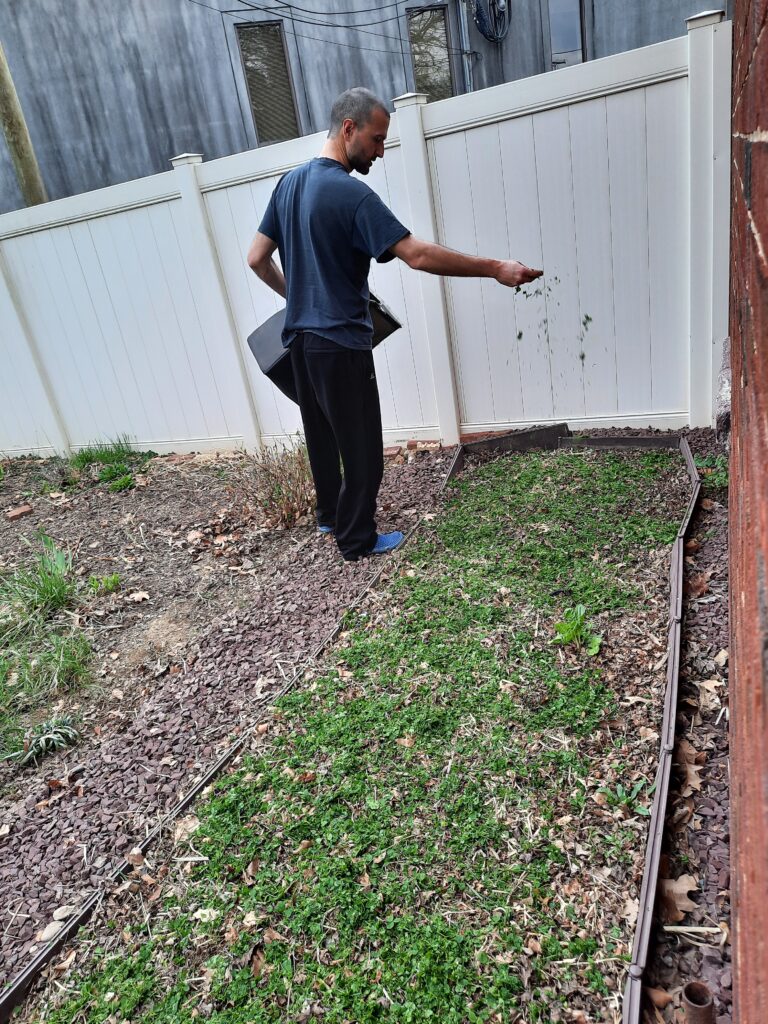
Incidentally, I’ve observed that slugs love clover clippings too!
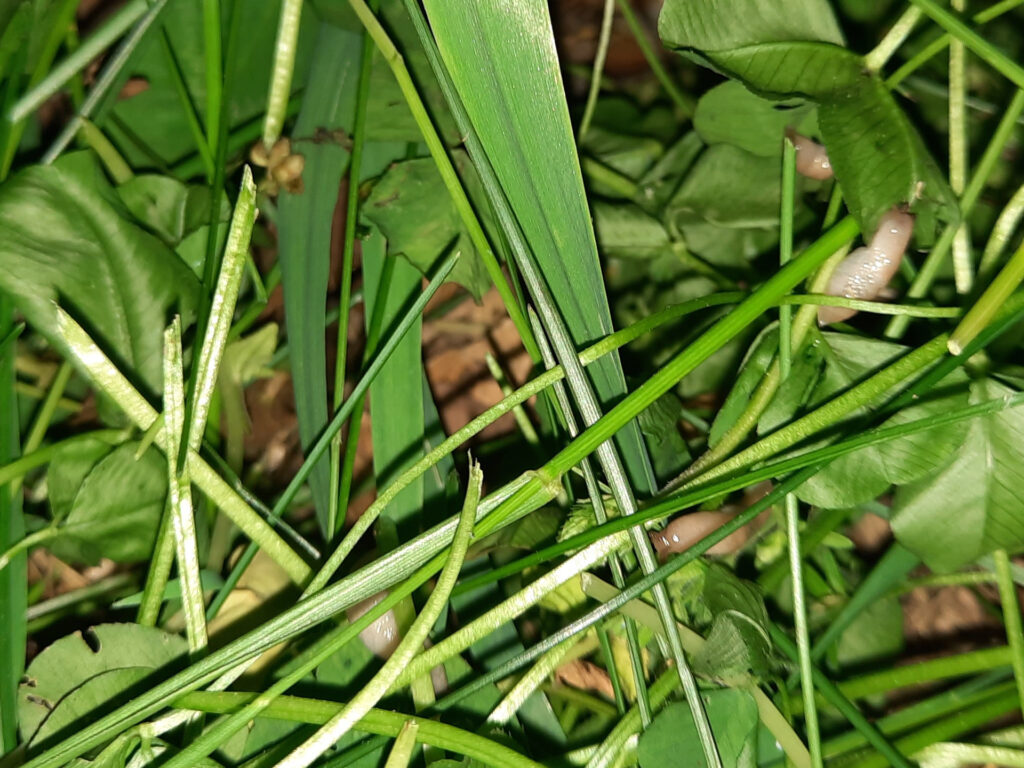
On the other end of the spectrum, tannin-rich plant matter–such as oak leaves–are apparently less palatable to worms, at least when fresh. Tannins are known to inhibit protein absorption by binding to proteins in the digestive tract. However, as tannin-rich plant matter weathers and decomposes due to microbial activity, it becomes more palatable to earthworms.
So, for these reasons, I try to provide a mix of nitrogen-rich and carbon-rich mulch. The nitrogen-rich clover clippings seem to disappear pretty quickly–due in part to the slugs I imagine. So if I just mulched with clover, the soil surface would not stay covered for long. Keeping a layer of mulch on top is important for several reasons, as I’ll discuss in the next section
And if you have any doubt that worms will eat carbon-rich food, check out the video below!
Employing mulch and no-till to create a worm-friendly environment
Aside from giving the worms a variety of food to eat, I also think about how to create a happy environment in other ways.
From what I’ve learned, worms do best in certain ranges of temperature and moisture. Too hot and the worms can actually die; too cold and their activity slows down. Apparently the ideal temperature range is 50-60 °F. As for soil moisture, if it’s too high, worms can’t breathe; and if the soil is too dry, worms can dry out and die or go into hibernation.
My sense is that in my garden, one major risk is the soil drying out too much during dry spells in the summer heat. So while I generally prefer to let clouds do the watering, I may turn on the garden hose for a bit to moisten the garden if it gets too dry. I’m sure the plants appreciate this too. And since the water that’s been sitting in the hose is usually pretty hot in the summer, I first empty that onto other parts of the yard before spraying the garden bed with cool water.
Another factor I consider is tillage. While tilling may favor some types of earthworms, tilling appears to have an overall negative effect on earthworms. For one, it can bring burrowing earthworms closer to the surface, making them more vulnerable to predators such as birds…perhaps even seagulls? (“Not fun!” to quote a Bad Lip Reading of Yoda 😂)
Another reason is that tilling tends to increase evaporative moisture loss from the soil, which makes the soil less hospitable for worms. Yet another reason is that tilled soil is subject to larger temperature fluctuations, which again is not good for worms. Finally, I can imagine that tilling disrupts earthworms burrows, forcing them to start over again;
To me, all of these factors point to one thing: mulch. Keeping a thick layer of mulch on top of the soil not only provides food for some types of worms, it also maintains soil moisture, helps regulate soil temperature, and probably provides a layer of protection against predators.
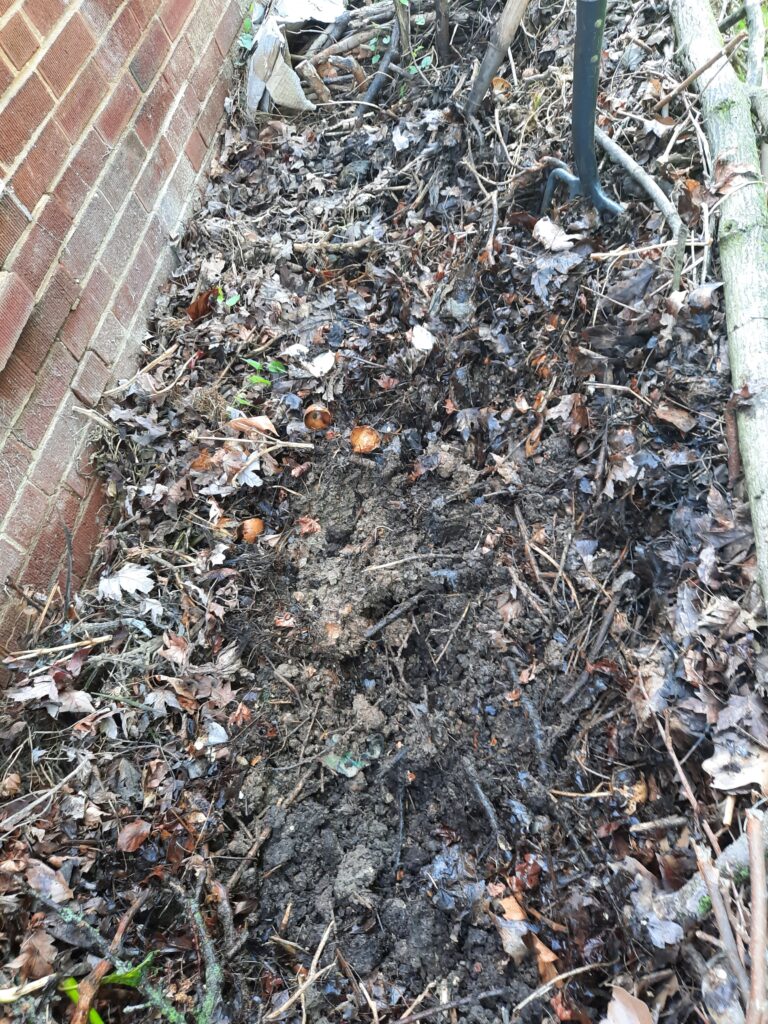

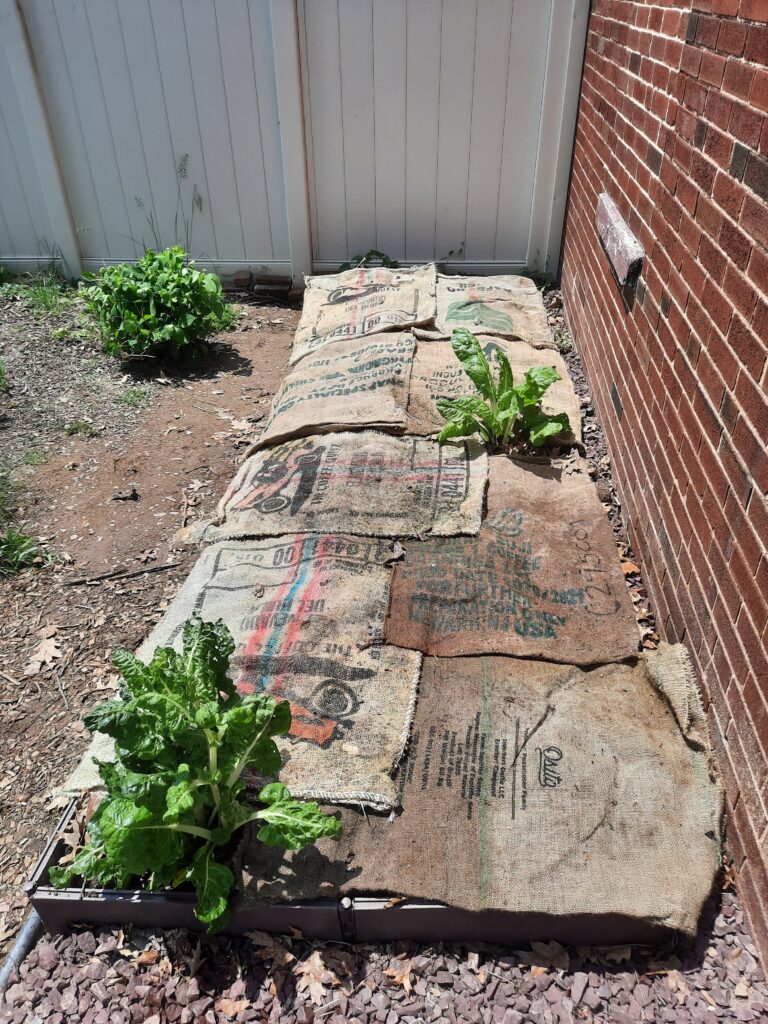
And for the times when I’ve just added some earthworm rich soil to the top of the bed with compacted soil in it, I’ve now gotten into the practice of covering the bed with burlap sacks for a week or two. I do this to give the worms a fighting chance at establishing burrows in their new home before the birds can get to them.
So my strategy is to keep the worms happy and let them do the tilling!
Reflections
As someone pointed out to me recently, it’s important to measure outcomes. In my case, the desired outcome is to make my garden more favorable for worms and thus make it more favorable for crops.
But is what I’m doing actually leading to the desired outcomes?
In theory, they should be. And I certainly want this to be the case.
But in practice, I don’t actually have the evidence to show how the practices that I am employing in the garden are affecting the earthworms and the crops.
So I suppose that one shortcoming of this experiment is that I don’t have a systematic way of measuring and comparing outcomes. If this were an official scientific experiment, this would be a major shortcoming indeed. But this is more of a hobby experiment.
Still, I’m now wondering about practical ways to keep track of outcomes for this experiment. For now, that’s something that I’ll have to keep chewing on. And perhaps you, the reader, can try out some of these practices in your own garden and let us know how it goes!
References
Most of the information about earthworms in this article came from the following two sources:
- Curry, J. P., & Schmidt, O. (2007). The feeding ecology of earthworms – A review. Pedobiologia, 50(6), 463–477. https://doi.org/10.1016/j.pedobi.2006.09.001
- Duiker, S. W., & Stehouwer, R. (2013, September 5). Earthworms. Penn State Extension. https://extension.psu.edu/earthworms
Nice wormy article, Doc! I love the time lapse worm chow-down! :o)
Wild be with the wiggly ones,
Lumi